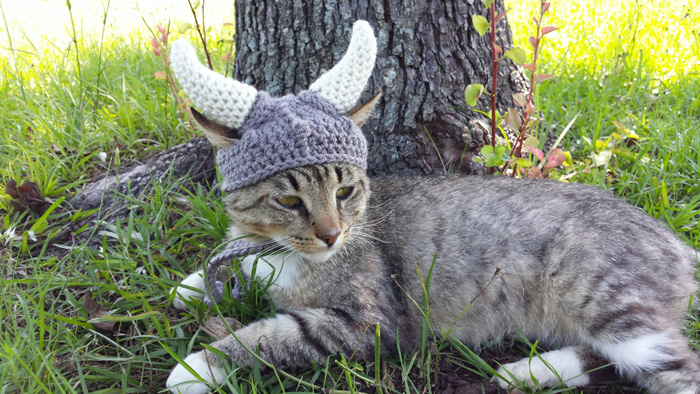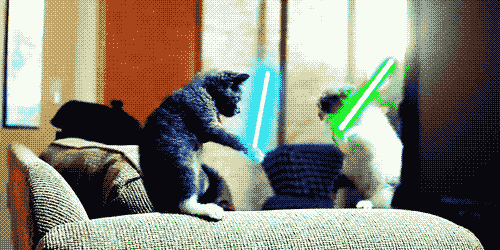
Posted on 09/21/2016 5:10:09 AM PDT by SJackson
First large-scale study of ancient feline DNA charts domestication in Near East and Egypt and the global spread of house cats.
Thousands of years before cats came to dominate Internet culture, they swept through ancient Eurasia and Africa carried by early farmers, ancient mariners and even Vikings, finds the first large-scale look at ancient-cat DNA.
The study, presented at a conference on 15 September, sequenced DNA from more than 200 cats that lived between about 15,000 years ago and the eighteenth century ad.
Researchers know little about cat domestication, and there is active debate over whether the house cat (Felis silvestris) is truly a domestic animal — that is, its behaviour and anatomy are clearly distinct from those of wild relatives. “We don’t know the history of ancient cats. We do not know their origin, we don't know how their dispersal occurred,” says Eva-Maria Geigl, an evolutionary geneticist at the Institut Jacques Monod in Paris. She presented the study at the 7th International Symposium on Biomolecular Archaeology in Oxford, UK, along with colleagues Claudio Ottoni and Thierry Grange.
(Excerpt) Read more at nature.com ...
My bitch Corgi is death on rats. What I don't "get" is how she differentiates between rats and other rodents. We have yard sited bird feeders, and squirrels, chipmunks and rats all help themselves to the wastage on the ground. We turn Rosie loose, and she bee-lines for the rat, ignoring the others.

I’ve got one of those with a bit of beagle in her blood. Her prey drive DNA is activated by small critter movement.

Oh, puh-leeze.
I'm not *that* crazy. If you were to talk to me, you'd almost think I'm normal.

When I was in high school, my sister had a cat that could take down a full grown squirrel, and did on more than one occasion. Still, I've never known of another one.
Generally, so I've read, cats hunt the juvenile rats, a good in itself, but not the full grown ones. Generally predators do not care to be hurt themselves in hunting, so there is a certain size differential they maintain.
Read a short, insightful book called Why Big, Fierce Animals Are Rare, I forget whom it is by.

We have feral cats in our neighborhood. We once found a squirrel head and tail lying on the ground, with most of the in-between all gone. We are sure it was one of the cats.
Norwegian Forest Cat????
Cats know exactly what we are thinking.
They just do not give a damn.
But they do know what we are thinking.
The Norwegian Forest cat is a domestic cat breed that originated in Northern Europe, and one that is naturally at home in cold climates, possessing a long, water resistant coat with an extra layer of insulation provided by a denser, more woolly undercoat. One of the larger domestic cat breeds, the Norwegian Forest cat is a robust and visually impressive cat that enjoys spending a lot of time outdoors and roaming around. They are popular as pets both in their home country of Norway and the other Scandinavian countries, and also enjoy a considerable following here in the UK.
The cats adapted naturally to thrive in the region’s cold winters, and the breed likely developed from the introduction by Viking invaders of longhaired cats that bred with locally occurring domestic and wild shorthaired cats, to produce the cat breed that we know as the Norwegian Forest cat today.
Norwegian Forest cats were prized for their hunting abilities, and were popular as both farm cats and ship’s cats for this reason. The first Norwegian Forest cat breed association was formed at around the time that the Second World War broke out in 1938, in an attempt to preserve the breed and further its aims. However, these first preservation efforts for the Norwegian Forest cat were hampered by the war in Europe, as the breed interbred in great numbers with non-pedigree domestic cats, leading to the Norwegian Forest cat as a pure breed almost dying out entirely.
After the war, the Norwegian Forest Cat Club made great efforts to preserve and establish the breed, saving this large and noble cat from almost certain extinction. During the 1970’s, the first Norwegian Forest cats were exported to the rest of the world market, and gained recognition as an official breed by most of the world’s formal feline registries by the late 1970’s.
http://www.pets4homes.co.uk/pet-advice/more-about-the-norwegian-forest-cat.html
I'm talking farm cats, not house pets (though some do). We had a calico momma cat, who "kittened" several generations that we kept some kittens out of. She was "the boss" of all her offspring, including the males. They weren't true ferals, as all of them would come to be fed and petted, but otherwise they acted as they a feral group which had our farm as "territory". Any of them could (and did) take rats, squirrels, etc.
And then you have breeds like Maine Coons, Norwegian Forest Cats, etc, that are BIG. I doubt any of them would be even remotely intimidated by any rat.

Um, no. Cats are clairvoyant....they know what we are GOING to think, before we think it.
Disclaimer: Opinions posted on Free Republic are those of the individual posters and do not necessarily represent the opinion of Free Republic or its management. All materials posted herein are protected by copyright law and the exemption for fair use of copyrighted works.